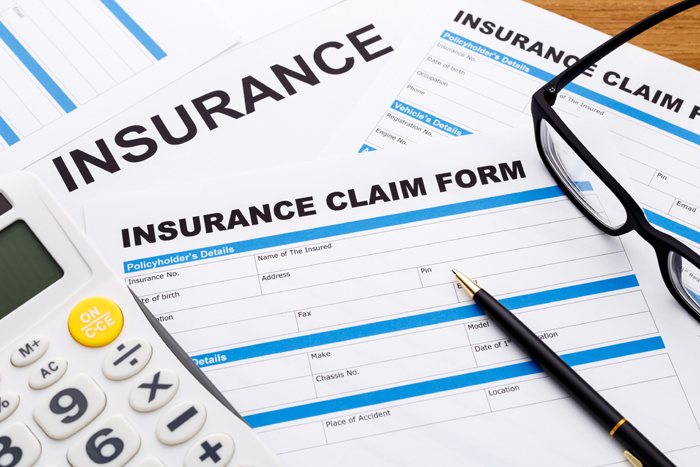Insurance claims are a critical component of the insurance industry, serving as the mechanism through which policyholders receive compensation for losses or damages covered under their policies. However, before a claim is approved, insurance companies often conduct a thorough investigation to verify its legitimacy, assess damages, and ensure that the terms of the policy are met.
Understanding the step-by-step process of an insurance claim investigation can help policyholders navigate the claims process more effectively and provide insight into how insurers protect themselves and their clients from fraud.
Claim Reporting
The insurance claim investigation process begins when the policyholder reports a loss to their insurance company. Prompt reporting is essential, as most insurance policies include strict timeframes for notifying the insurer about a loss. The report typically includes details such as the nature of the loss, the date it occurred, and any relevant documentation, such as photos, receipts, or police reports.
At this stage, the insurance company assigns a claim number and a claims adjuster, who will serve as the primary point of contact for the policyholder. The claims adjuster’s role is to manage the investigation, gather information, and communicate updates throughout the process.
Initial Review and Documentation
Once the claim is reported, the insurance company conducts an initial review to determine whether the claim meets the basic requirements of the policy. This involves verifying coverage, reviewing policy limits, and assessing whether the claim appears valid based on the information provided.
The policyholder may be asked to submit additional documentation during this phase. For example, in the case of property damage, the insurer might request photographs of the damage, repair estimates, or receipts for damaged items.
For health or life insurance claims, medical records, hospital bills, or death certificates may be required. Proper documentation is crucial because it forms the foundation of the investigation and helps the insurer make informed decisions.
Assignment of an Investigator or Adjuster
For more complex claims, particularly those involving significant financial loss or potential fraud, the insurance company may assign a specialized investigator in addition to the claims adjuster. These investigators often have backgrounds in law enforcement, forensic accounting, or insurance fraud detection.
The investigator’s role is to examine the claim in greater detail, looking for inconsistencies, verifying statements, and assessing the legitimacy of the loss. For example, in auto insurance claims, investigators might inspect the vehicle, reconstruct accidents, or interview witnesses. In property insurance claims, they may inspect the premises, evaluate damages, and compare repair estimates to industry standards.
Gathering Evidence
Gathering evidence is a crucial part of any insurance claim investigation. The investigator or adjuster collects all relevant documentation, conducts interviews, and may even consult third-party experts, such as appraisers or medical professionals. Evidence collection can include:
Photographic or video evidence: Visual documentation of damages or accidents.
Witness statements: Accounts from people who observed the incident or can verify circumstances.
Medical or police reports: Official documents that corroborate the claim.
Financial records: Receipts, invoices, and statements that prove the value of lost or damaged items.
Thorough evidence collection ensures that the insurer has a clear and accurate understanding of the situation, which reduces the risk of errors or fraudulent claims being paid.
Interviews and Statements
Interviews are often conducted with the policyholder, witnesses, or other involved parties to gather firsthand accounts of the incident. Insurance investigators are trained to ask targeted questions that clarify details, detect inconsistencies, and verify the timeline of events.
During interviews, all parties need to provide honest and accurate information. Providing misleading or incomplete statements can lead to delays, denial of the claim, or legal repercussions. Insurance companies are obligated to conduct these interviews professionally, respecting privacy and legal boundaries.
Analysis and Evaluation
After collecting evidence, the adjuster or investigator analyzes the information to determine the validity and value of the claim. This may involve:
Comparing the claim details against the insurance policy terms.
Evaluating the extent of damages or loss.
Consulting experts to estimate repair costs or medical expenses.
Reviewing historical data or previous claims to identify unusual patterns.
The evaluation phase is critical because it establishes whether the claim is legitimate, partially valid, or fraudulent. Accurate assessment ensures that policyholders receive fair compensation while protecting the insurer from financial loss.
Fraud Detection
Insurance fraud is a significant concern in the industry. Investigators are trained to recognize red flags that may indicate fraudulent activity. Common indicators include:
Exaggerated or inconsistent damage reports.
Discrepancies between statements and documented evidence.
Frequent or repeated claims by the same policyholder.
Suspicious timing or circumstances surrounding the claim.
If fraud is suspected, insurers may involve legal authorities or specialized fraud units to conduct further investigations. Detecting fraud not only protects the company but also helps keep insurance premiums reasonable for honest policyholders.
Claim Decision
Once the investigation is complete, the claims adjuster prepares a report summarizing the findings. Based on this analysis, the insurance company decides the claim. The outcome may include:
Full approval: The claim is valid, and the policyholder is entitled to full compensation.
Partial approval: Only certain aspects of the claim are covered, or compensation is limited by policy terms.
Denial: The claim is rejected due to lack of coverage, insufficient evidence, or fraud.
The decision is communicated to the policyholder, along with an explanation of the reasoning and any next steps.
Settlement and Payment
If the claim is approved, the insurer issues payment to the policyholder or directly to service providers, such as repair shops or medical facilities. The settlement process may involve negotiation in cases where damage estimates or compensation amounts are disputed. Once the settlement is finalized, the claim is officially closed.
Record Keeping and Follow-Up
Even after the claim is resolved, the insurance company maintains detailed records of the investigation and settlement. These records serve multiple purposes:
Supporting future claims.
Providing documentation in case of legal disputes.
Assisting in risk assessment and underwriting.
Monitoring patterns for fraud prevention.
Policyholders should also keep their own records of the claim, including correspondence, receipts, and reports, as these may be needed for tax purposes or potential disputes.
Conclusion
The insurance claim investigation process is a structured and methodical procedure designed to ensure that claims are handled fairly, accurately, and efficiently. From initial reporting and documentation to investigation, evaluation, and settlement, each step serves a critical role in verifying the legitimacy of a claim and determining appropriate compensation.
Understanding this process helps policyholders navigate the often-complex world of insurance claims with confidence, reduces the risk of disputes, and highlights the importance of honesty and thorough documentation. By following these steps, both insurers and policyholders can achieve a transparent, reliable, and efficient claims process.





